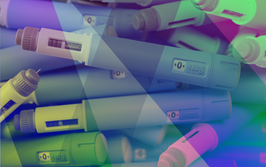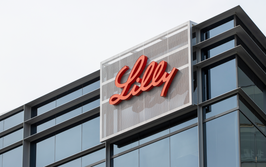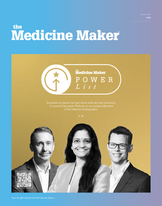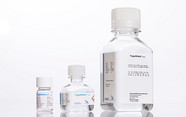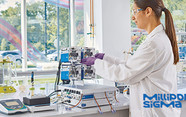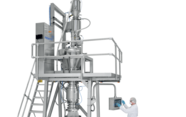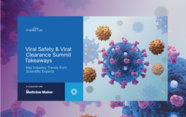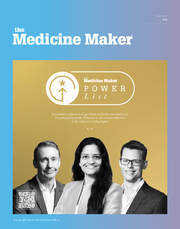GenAI: Automating Regulatory Submissions
Within two years, pharma companies may be able to rely on technology to automatically create and cross-check entire regulatory submissions.
Agnes Cwienczek | | 4 min read

With its ability to digest, assess, create and summarize key insights from diverse bodies of existing content, and data – even as this is continuously refreshed – generative AI (genAI) has the potential to transform everyday regulatory and pharmacovigilance processes in the pharma industry. GenAI is a form of artificial intelligence which, through deep learning drawing on vast banks of data, can generate new insights and content summaries in an easily-digestible form (involving text, graphics/charts, audio, or other media).
The technology could potentially be used to help pharma companies pre-empt agency queries and build stronger marketing authorization applications. There is certainly a decent knowledge base in the industry to draw on (containing years’ or decades’ worth of successful, rejected, and re-worked submissions, along with corresponding agency interactions) to distil what good looks like.
GenAI tools can help build and enrich a knowledge base. We’ve been working with companies on early pilots using genAI to automatically inject health authority interactions into a database or regulatory information management (RIM) system. We’ve seen 12 fields of data extracted with 90 percent accuracy, 80 percent faster processing, and three times fewer handovers compared to when teams of professionals have to go back through historical submissions and agency interactions manually.
GenAI tools can also be used to automatically check across the global organization what has been objected to by other agencies (relating to the same submission, but in a different country) and flag this within the current content. It can create summaries for the various reports in the submission, as well as any administrative documents such as cover letters or forms, and check that data is consistent between CMC documents and labelling.
The technology is also demonstrating powerful potential in monitoring, filtering and applying the latest global regulatory intelligence; for instance, as part of regulatory impact assessment in the preparation of new or updated submissions for individual markets based on specific agency requirements, or compliance with particular labelling requirements. Initial projects here have again yielded 90 percent accuracy and faster processing compared to manual regulatory intelligence lookup and application.
And this is just the beginning. Within the next two years, regulatory teams could be using genAI tools to compile and cross-check entire dossier or data-based submissions automatically, with a human-in-the-loop quality review from regulatory professionals requiring a fraction of the effort expended today.
Typically, large pharma organizations generate around 600-800 dossier- or data-based submissions [Per year?]. Even a very modest time saving of just 1-2 hours per submission would make a substantial difference – and this is the minimum saving I expect to see, extrapolating from initial regulatory use cases of the technology that we’ve seen with customers.
As the ability to distil and cross-check information across all modes and formats (tables and diagrams in already-approved documents, as well as text in any language captured across the global organisation) is honed, optimized genAI tools will be able to consult and verify with the latest regulatory intelligence on demand. This approach would validate which elements of the content are required for each use case, and how this must be presented, with little to no intervention required from human professionals up to the point of review.
The relevant information is automatically identified, filtered and repurposed to fill out the given submission outline. Automated cross-checking with the company’s RIM system could determine what has previously been submitted, and confirm that the new submission is accurate and consistent; for instance, that the correct excipient/ingredient information has been extracted from the latest documentation.
In this way, genAI promises not only to expedite and reduce costs associated with submissions compilation; but also to improve the quality, accuracy, and success rate of submission updates.
In addition to fulfilling the demands of agencies in mature regulatory markets such as the EU and North America, advanced automation in regulatory submissions generation will transform the efficiency of dealing with less developed markets. Many of these markets still rely heavily on non-electronic files and have less standardized requirements. The ability to streamline associated submissions with advanced end-to-end automation promises to be very powerful here in helping companies navigate the differing requirements, deduce “what good looks like”, and swiftly collate and format what’s needed for optimal impact.
Additional opportunities for genAI in a regulatory context include automated cross-checks to identify discrepancies and anomalies in data and its formatting, as part of companies’ data improvement efforts as they strive to comply with ISO standards geared to more uniform Identification of Medicinal Products (IDMP). Further possibilities include more efficient and effective maintenance of labelling compliance internationally through automated application of the latest regulatory guidance and deviation management over time.
With all of this potential on the horizon, life sciences organizations need to get to grips with genAI technology today – to get a feel for how far genAI can go, how quickly results can be honed, and how much time and budget this could buy back for hard-pressed regulatory teams.
Of course, merely adding a genAI capability alone is no magic bullet. In parallel, companies will need to bolster their internal knowledge bases (e.g. with the latest information on emerging/developing markets and their submission requirements). They will also need to continue cleaning up, standardizing and unifying their product data. The more diverse and robust the assets that genAI can draw from, the more transformational associated process automation initiatives will be.
Director of Product Management at ArisGlobal, with a remit including the provision of business process and data management expertise in the areas of Regulatory Information Management, Document Management, Submission Management and Labelling Management. Agnes previously worked at Merck in Global Regulatory and Quality Assurance, a milestone in a career spanning two decades at the frontline of regulatory information management.


